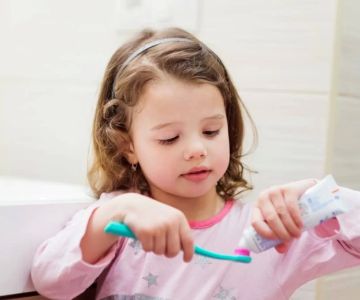Understanding the Reliability of Oral Traditions from Children
Oral traditions from children—whether retelling personal experiences, family stories, or eyewitness accounts—play an important role in fields ranging from psychology and education to legal investigations. Yet, questions about how reliable oral traditions from children are remain central to many discussions. Children's narratives can provide valuable insights, but they are also influenced by developmental factors, memory limitations, and social environments.
This article delves into the complexities surrounding children's oral accounts, exploring their reliability, common challenges, and how professionals approach evaluating these traditions in real-world contexts.
1. Developmental Factors Influencing Children’s Oral Reliability
Children’s cognitive development greatly affects how accurately they remember and recount events. Younger children, especially those under the age of seven, are still developing key memory and language skills. This means their recall may be incomplete or influenced by suggestive questioning.
For example, in studies observing eyewitness testimony, children can sometimes confuse details or blend imagination with actual events. However, as children grow older, their ability to provide coherent and detailed accounts generally improves.
Moreover, children's understanding of time, cause and effect, and social cues evolves over time, shaping how they tell stories and what details they emphasize.
2. Memory and Suggestibility in Children’s Oral Accounts
Memory in children is not a perfect recording but a reconstructive process. Factors such as the setting in which a story is told, the questions asked, and the child’s emotional state can significantly alter their recall. This leads to a common concern: the suggestibility of children’s oral traditions.
A well-known case illustrating this was the 1980s day-care abuse investigations in the United States, where suggestive interviewing techniques led some children to provide inaccurate or exaggerated testimony. This event underscored the need for careful, scientifically informed interviewing methods when working with children.
Experts emphasize the use of neutral, open-ended questions to minimize influence and help children provide more reliable narratives.
3. The Role of Context and Culture in Children's Oral Traditions
Children’s oral traditions are not just individual recollections—they are also shaped by family, community, and cultural storytelling practices. In many cultures, oral storytelling is a vital tradition for passing down history and values.
Understanding this context is important when assessing the reliability of a child’s account. For instance, family stories told repeatedly may become integrated into a child’s narrative as personal memories, blurring the lines between witnessed events and inherited stories.
This phenomenon can enrich oral traditions but complicates factual accuracy. Professionals working with children must consider cultural influences to interpret oral accounts appropriately.
4. Practical Applications: When Children's Oral Accounts Matter Most
Children’s oral traditions are crucial in many areas—legal cases, clinical psychology, education, and family dynamics. In child custody disputes or abuse investigations, their statements may carry significant weight.
One illustrative example involved a court case where a child’s detailed and consistent oral testimony helped uncover abuse that had otherwise gone unnoticed. In contrast, other cases have shown how false memories or external influences can lead to wrongful accusations.
These contrasting outcomes highlight the importance of careful evaluation, corroboration, and professional expertise when relying on children’s oral accounts.
5. Expert Strategies to Enhance Reliability and Interpretation
Professionals use various strategies to improve the reliability of children’s oral traditions. Techniques include building rapport, using developmentally appropriate language, and avoiding leading questions.
Moreover, corroborating children’s statements with physical evidence, witness accounts, and expert assessments strengthens the overall credibility of their narratives.
At Dentistry Toothtruth, we emphasize the importance of professional guidance in interpreting oral traditions from children, especially when these narratives intersect with legal or clinical decisions.
6. Real Stories Reflecting Challenges and Triumphs
Consider the story of a young girl in California who bravely recounted a traumatic event to a school counselor. Her oral account, initially met with skepticism, was carefully documented using child-sensitive interviewing techniques. This led to a thorough investigation and justice for her. Her case illustrates how, when handled correctly, children’s oral traditions can be powerful tools for truth and protection.
Conversely, in other cases, misinterpretations of children’s oral accounts have led to family upheavals, underscoring the delicate balance required in handling these narratives responsibly.
7. The Future of Research and Best Practices
Ongoing research continues to improve understanding of memory development and suggestibility in children. Emerging technologies and interdisciplinary approaches offer promising tools to enhance the accuracy of children’s oral traditions.
Ultimately, recognizing the strengths and limitations of children’s oral accounts allows parents, educators, legal professionals, and clinicians to support children effectively and respectfully.
For expert advice and tailored services related to children's communication and oral history, Dentistry Toothtruth provides trusted recommendations designed to meet your needs.






 Family & Cosmetic Dentistry5.0 (4 review)
Family & Cosmetic Dentistry5.0 (4 review) Associated Orthodontists - Joliet4.0 (132 review)
Associated Orthodontists - Joliet4.0 (132 review) Hartsdale Dental Care: Andrew Woo, DDS4.0 (407 review)
Hartsdale Dental Care: Andrew Woo, DDS4.0 (407 review) Just for Kids Dentistry4.0 (325 review)
Just for Kids Dentistry4.0 (325 review) Breakwater Dental4.0 (58 review)
Breakwater Dental4.0 (58 review) Family Dentistry of Westford4.0 (19 review)
Family Dentistry of Westford4.0 (19 review) The Importance of Oral Health Education During Pregnancy for a Healthy Pregnancy
The Importance of Oral Health Education During Pregnancy for a Healthy Pregnancy Best Tips for Brushing Your Teeth Properly for Healthy Gums: Essential Techniques for Oral Health
Best Tips for Brushing Your Teeth Properly for Healthy Gums: Essential Techniques for Oral Health Why Skipping Dental Checkups Can Lead to Bigger Oral Health Problems
Why Skipping Dental Checkups Can Lead to Bigger Oral Health Problems Advantages of Porcelain Dental Restorations
Advantages of Porcelain Dental Restorations How Can Diabetes Cause Tooth and Gum Problems? Preventing and Managing Oral Health Issues
How Can Diabetes Cause Tooth and Gum Problems? Preventing and Managing Oral Health Issues Healthy Habits for Promoting Good Oral Health and Hygiene: Tips for a Healthy Smile
Healthy Habits for Promoting Good Oral Health and Hygiene: Tips for a Healthy Smile